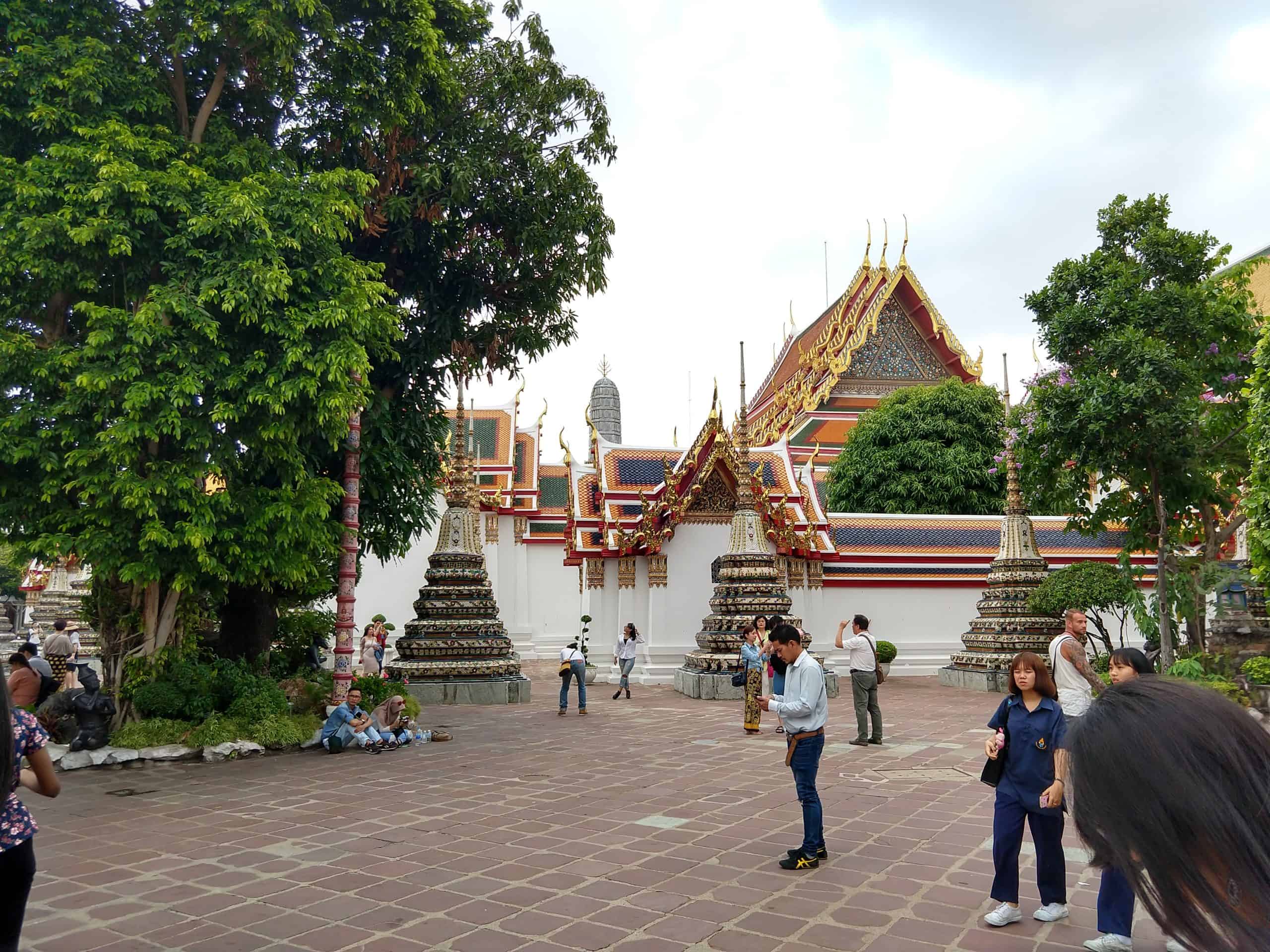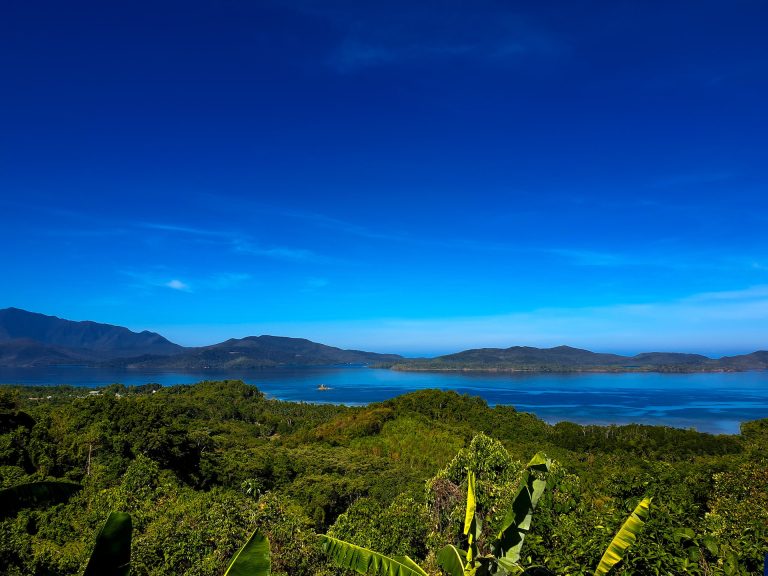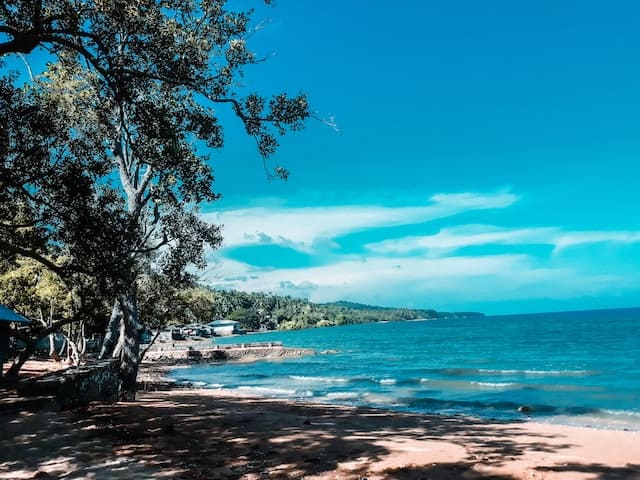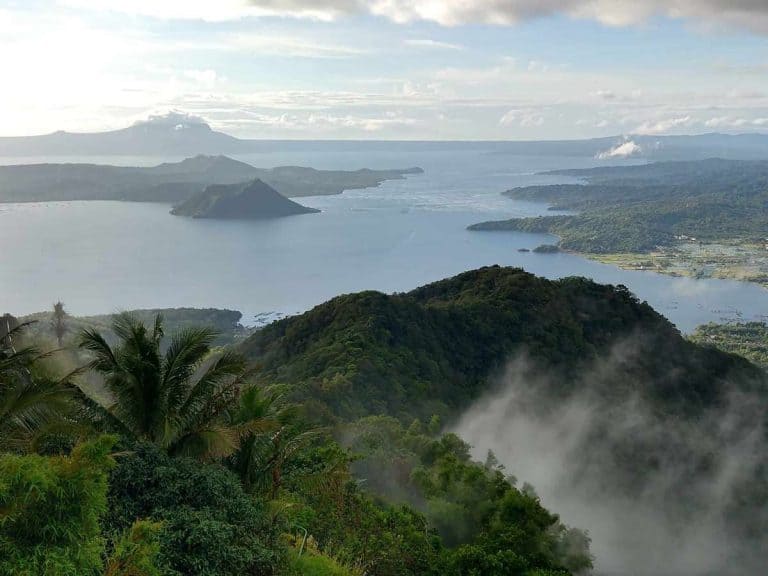Manila Vs. Bangkok: Where Should You Go?
Manila and Bangkok are both gateways to tropical paradise, and exciting cities in their own right.
But what if you only have time to travel to one? After visiting Bangkok and living in Manila, here’s my perspective.
There’s no question that Bangkok wins in terms of infrastructure, and it’s arguably a better travel value. However, Manila has higher English prevalence, is slightly less hot, and has particularly interesting colonial architecture. Both are affordable destinations with almost every amenity you can imagine, including (in)famous nightlife.
For a closer look, I’ll use some public stats plus my own experience in both cities to offer some insights on their relative size, prices, traffic, and overall quality of life.
But first, there’s one indisputable difference: people around Manila usually speak English fluently, many with basically native proficiency. That’s good news, since Tagalog is generally difficult to learn.
Bangkok is huge and cosmopolitan, and English is widely spoken there, too. We’ve had no real problems despite not speaking a word of Thai. However, English is very much a second (or third…) language among Bangkok residents. English proficiency is understandably lower than in Manila on average, so it’s harder to do non-basic things in English in Bangkok.
Anyhow, let’s get into some more nuanced factors.
Which is “better”: Manila or Bangkok?
As an American, both cities feel distinctly Southeast Asian. It’s hard to put that into words, but you’ll “get it” after even a day in either.
However, Bangkok feels like Manila ten or twenty years in the future. Bangkok is more efficient, cleaner, and more upscale on average. However, certain parts of Metro Manila are as pleasant and walkable as anywhere in Asia or beyond.
Infrastructure
The infrastructure differences are immediately obvious. Both cities have metro systems that more or less serve the most critical routes.
Bangkok’s strikes me as cleaner and more comfortable, and in my observation, far easier to get on during peak hours.
Manila is working extremely hard to expand its own, but it’s a decade-long plan with a long way to go. Jeepneys may have a certain charm in the meantime, but they are not a substitute for a more integrated transit network like Bangkok has built!
Getting by without a car is simply easier in Bangkok, and that’s not likely to change in the near future.
Both cities are connected by large, modern expressways that extend far outside the metro area. I’d say Bangkok’s big roads are in slightly better repair, and most travelers seem to agree.
Cleanliness & upscale-ness
In both Bangkok and Manila, I’ve stepped in my share of smelly puddles and been greeted unexpectedly by that unmistakable sewage aroma. Chalk it up to the heat and humidity, perhaps.
That said, Manila’s nicest districts, especially Makati and BGC, are as well-kept and upscale as anything in Bangkok. As a visitor, you’ll probably stay in those areas. They just contrast much more against the rest of Manila than, say, the Siam Square area against the rest of Bangkok.
In summary, both cities have remarkably upscale areas that impress even totally spoiled foreigners like me. They’re more common in Bangkok, and perhaps come at less of a premium price, relatively.
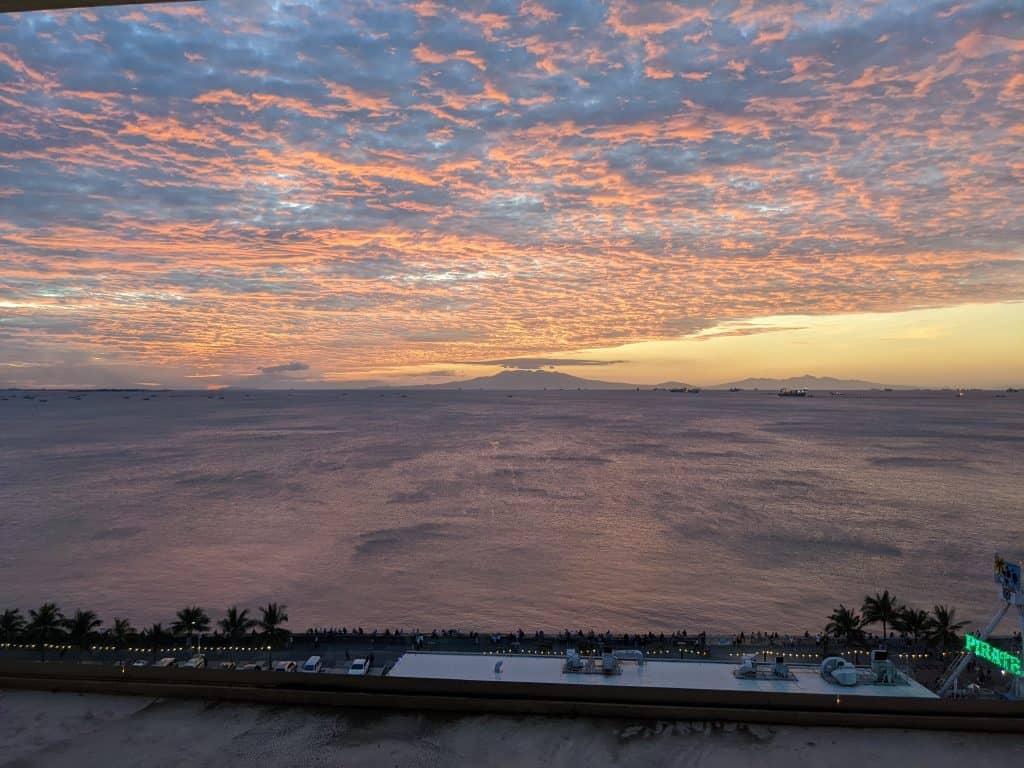
Is Manila or Bangkok bigger?
These are two huge cities. It’s impossible to see all of either one in a day.
But buildings and traffic and population density can sway our perception of a city’s size. So, in reality, is Manila or Bangkok the bigger city?
Land area
In terms of land area on a map, Bangkok is almost 2.5 times the size of Manila.
It’s truly vast: at 606 square miles, Bangkok covers even more territory than Los Angeles.
The City of Manila proper is surprisingly small, so the whole Metro Manila region is a better comparison. Even so, all of Metro Manila, which includes many small cities, is 239 square miles, or only about 40% of the area of Bangkok.
Population
In terms of population, it’s the opposite, as Metro Manila has more than half again the population of Bangkok.
This adds up to a striking difference in population density. Manila’s smaller borders hold close to 13 million people (and likely millions more undocumented). With roughly 8 million people in Bangkok, it’s still a very large city, but nowhere near Manila’s extraordinary population density.
Both feel absolutely packed to most Westerners, and both are, obviously, densest in their center.
But whereas Bangkok starts feeling less crowded just a couple miles from its center, Manila’s staggering density barely dwindles.
Traffic in both is epically bad, but you’ll feel the congestion more in Manila. That phenomenon has a funny way of making the objectively smaller city feel bigger than it really is.
Is Manila or Bangkok cheaper?
I mentioned earlier that both cities have really nice districts.
Not just business-traveler-upscale; we’re talking Lamborghini dealers, luxury boutiques, and the whole nine yards.
There are also low-key, hip, artsy spots in both. Think microbreweries, independent galleries, and artisanal everything.
Hotel prices
While I can’t speak to Ferrari and Ferragamo prices, the high-end hotels are a bit less in Bangkok. In fact, as of 2017, Bangkok was the second-cheapest city in the world for a five-star hotel room, at $147.
Now, that degree of comfort is still pricey, but it’s a good 20% less (give or take) than I see for similar rooms in Makati, BGC, or the City of Manila waterfront.
For more of a nice-side-of-normal hotel, $50-$100 per night will suffice in both cities.
That’s a wide range, but the neighborhood, hotel size, and timing will push it in either direction. Here, too, I find that Manila runs no less than Bangkok, and perhaps a few bucks more.
But the biggest difference? At the same price point, the Manila option is less likely to be walkable or convenient to transit, since walkability and transit access are so rare there in the first place.
Food prices
Food definitely won’t be the thing to break your budget in either city.
A couple bucks will easily buy a dish (or two) from street vendors and even some hole-in-the-wall restaurants. However, Bangkok street food strikes me as more varied than its Manileño counterpart. Some would argue it’s safer, too, but I really couldn’t say who takes safe handling more seriously.

In Bangkok and Manila alike, mall food courts are probably the cheapest option that’s still almost certain to be safe.
If you’re new to Southeast Asian travel, you’ve got to realize that malls are major social hubs, so their restaurants are somewhat destinations. They’re nothing like the food court down the hallway by Sears and across from Claire’s at your local suburban mall.
With that social role comes not only decent food, but air conditioning to enjoy it in.
Oddly, I’ve noticed that food courts and inexpensive chain restaurants run slightly more in Manila. We’re not talking a big difference in absolute terms, perhaps $1-$2 for comparable meals, but the percentage difference is pretty significant.
But the middle of the restaurant spectrum is where Manila starts to take the lead. A basic set meal is ever so slightly less, as is a beer to go with it. Numbeo confirms this, with food in Manila coming in well under Bangkok in most respects.
Does Manila or Bangkok have worse traffic?
The least fun question, but a critical one when planning your itinerary (or staying long-term), is that of traffic.
Some studies say Bangkok is the worst; others say Manila is worse, and deteriorating as we speak.
It probably depends on whether you’re measuring business districts or entire metro areas, accounting for fatality rates, looking at cars or motorcycles or transit or everything, and so on.
TomTom, the GPS navigation company, put Manila at #2 in the world and Bangkok at a still-bad #11. The research firm INRIX pegged Bangkok at #33, yet didn’t include Manila, which seems odd (or might just reflect missing data). The Manila-based Asian Development Bank put its hometown at #1 (in Asia) by a long shot.
My takeaway is this: if those adjustments change the winner, then both are terrible!
Personally, Manila traffic is wilder and more stressful, and it’s rarer to find times or places that move smoothly.
If possible, you’ll have a better time in either city by paying more for a central location that minimizes road travel and maximizes walking. (But the heat and humidity is another story!)
Bottom line: Bangkok’s great & Manila’s worth it!
Thus far, it might sound like Bangkok is the objectively better city. That’s true in terms of infrastructure, and it may be true in terms of hotels and traffic.
But the hardest thing to compare is arguably the most important: which city has more of the warmth and charm that makes you say, “I’m glad I went!”?
Both places are known for hospitality: less in the capitals than in the provinces, but there’s a certain friendliness that you don’t always find in other countries.
The difference is that practically universal English-speaking make that hospitality more accessible, especially as a short-term visitor. That alone is a big reason that Manila is worth visiting.
Besides language, there are deeper similarities to the West, largely from predominant Catholicism and general American cultural influence.
All in all, many visitors just find Manila more understandable and (in intangible ways) comfortable. Not all, of course, but many.
Living in one or the other is a totally different question. But as a tourist, if you enjoy either city in the slightest, you’ll probably find yourself planning a trip to the other soon after.

